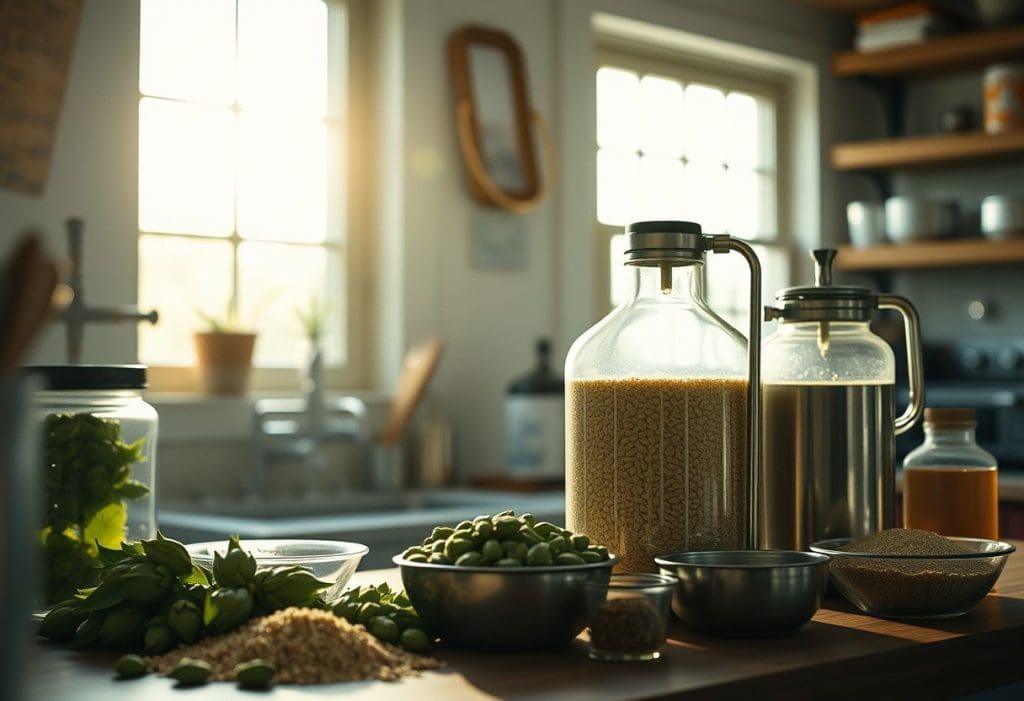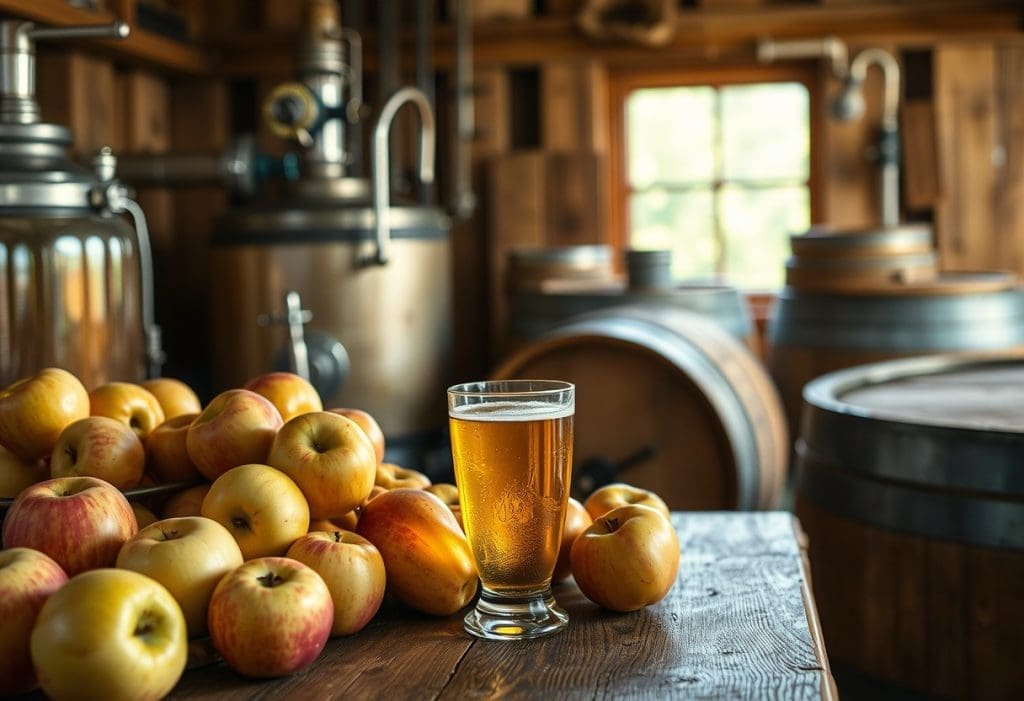Home brewing is a rewarding and fun way to create your own unique beers right in your kitchen!
Whether you’re a novice or have some experience, this guide will help you navigate the exciting process of brewing your favorite beverages.
From selecting ingredients to bottling your finished product, I’ll share with you some tips that make brewing approachable and enjoyable.
Grab your brewing gear, and let’s launch on this delicious journey together!
Understanding the Brewing Ingredients
While brewing beer at home, it’s important to familiarize yourself with the key ingredients that will shape your final product.
Each component plays an important role in defining the flavor, aroma, and overall character of your brew.
From the quality of your water to the selection of malts, hops, and yeast, these ingredients will be key for creating delicious beer that suits your taste preferences.
Water
Across the brewing process, water is foundational to your beer’s quality.
Its mineral content and pH balance can significantly influence the taste and mouthfeel of your brew.
You can use tap water, filtered water, or even bottled water. In any of these cases, you’ll need to be mindful of its composition and consider adjustments to achieve the perfect profile for your chosen beer style.
Malt
Before plunging into the brewing, you’ll want to explore the various types of malt available, including base and specialty malts.
Your choice of malt will greatly influence your beer’s flavor, color, and body. This is a very important decision; the type of malt you select can make or break the final taste of your beer.
Proper malt preparation involves crushing and mashing to extract fermentable sugars, which will ultimately fuel the fermentation process.
Hops
With hops, you’ll discover a world of flavors and aromas that can enhance your brew. Different hop varieties provide unique bitterness, floral notes, and fruity profiles.
To extract your hops’ full potential, you’ll need to master when and how to add them to the brewing process. This is how you can nail the balance between bitterness and aroma in the end product.
So it’s not just when you add hops. It is also how — you could opt for dry hopping or boiling, and each method will affect the flavor and aroma greatly.
Yeast
For fermentation, yeast is your unsung hero. Yeast transforms sugars into alcohol and carbon dioxide.
Familiarize yourself with various yeast strains, so you can manage the distinct flavors and aromas produced during fermentation.
With the right yeast for your recipe, you can achieve top notch character and finish on your homebrew.
To get a beer that’s more than good, but exceptional, you need to optimize timing and temperature so your yeast can thrive.
It may take experimentation and a few batches for you to figure it out. Once you do, you’ll be pleased with your progress without a doubt.
Brewing Equipment You’ll Need
If you’re ready to begin on your homebrewing journey, you’ll need some necessary equipment.
A brew kettle for boiling your ingredients, a fermenter to allow your beer to mature, and bottling tools to package your finished product are just a few must-haves.
Be sure to clean and sanitize your gear properly to avoid any unwanted flavors.
Optional Tools for the Adventurous Brewer
Adventurous brewers might want to invest in additional tools to enhance their brewing process.
Gadgets like hydrometers help you measure specific gravity and monitor fermentation, while kegging systems can streamline the dispensing of your beer.
These tools make brewing easier and can elevate the quality of your homebrew.
A hydrometer will allow you to take precise measurements during fermentation, ensuring your beer is balanced and flavorful.
If you choose to keg, you’ll enjoy the convenience of draft beer at home and the ability to carbonate your brew more easily.
If you can afford both of these additional tools, I strongly urge you to go for it! You’ll be glad you did.
The Brewing Process: Step by Step
To successfully brew beer at home, you’ll follow a series of steps that transform simple ingredients into a delicious beverage.
The brewing process involves mashing, boiling, cooling the wort, fermenting, and finally, bottling your beer.
Grab your equipment and let’s look into the details!
Brewing Day
Some homebrewers compare it to Christmas morning, and brewing day is the start of the fun!
Begin by mashing your grains at around 150°F for about an hour, allowing those sugars to extract.
Next, bring your mash to a boil, adding hops according to your recipe.
Monitor the temperature closely during this phase, and once complete, cool the wort quickly to get it ready for fermentation.
Timelines can vary, so keep an eye on your clock!
Fermentation and Bottling
After brewing day, you’ll enter the fermentation stage where it’s important to monitor temperatures and specific gravity for optimal results.
Once fermentation is complete, you can proceed to the bottling process, ensuring your beer is carbonated and ready to enjoy.
After fermentation, you’ll need to allow your beer adequate time to mature in the bottle.
During this period, be sure to check the carbonation levels weekly for consistency.
Once you’ve reached the perfect balance, you can refrigerate your beer and prepare for that first taste.
Common Mistakes to Avoid
All homebrewers encounter bumps along the road, so learn from the experts and discover the most common pitfalls in homebrewing.
You might forget to sanitize your equipment, which can lead to unwanted flavors or spoilage.
Avoid rushing through the fermentation process, as patience is key for optimal brewing.
Additionally, don’t overlook the importance of precise measurements. They can make a significant difference in your final product.
Enjoying Your Homebrew
Keep the fun going by learning how to properly taste and appreciate your finished beer.
As you pour yourself a glass, take a moment to observe the color and aroma.
Explore exciting food pairings that complement the flavors of your brew, whether it’s a hearty stew or a light cheese platter.
Experiment with different serving methods, like chilling your beer to the perfect temperature. Don’t hesitate to share your homebrew experience with friends and family.
Summing up: How to Brew Beer at Home
Now you should have a great understanding of the basics of how to brew beer at home.
This activity can be a fun and rewarding hobby that allows you to enjoy your favorite beer, tailored to your taste.
By following the basics of sanitation, choosing good-quality ingredients, and mastering the brewing process, you can create unique flavors that reflect your personal style.
Don’t hesitate to experiment and learn from your results.
So gather your tools, pick a recipe, and start brewing – your own craft beer adventure awaits!



